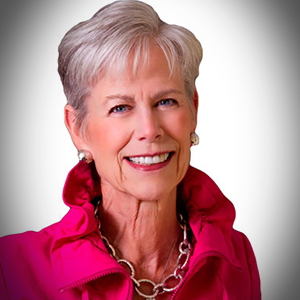 HIGHLIGHTS from Kathryn Miree’s presentation at CICF’s Fall Professional Advisor seminar
HIGHLIGHTS from Kathryn Miree’s presentation at CICF’s Fall Professional Advisor seminar
Kathryn Miree, planned giving consultant, demands the attention of a room. Not because she asked for it—though she did warn the audience at CICF’s fall Professional Advisor Seminar against falling asleep—but because her passion for planned giving and family philanthropy is too big to ignore. Miree’s high-energy presentation and real-life examples of planned gifts gone awry were often both hilarious and a little scary, but provided the audience with powerful tools to help make their clients’ philanthropic dreams come true.
If you didn’t have the pleasure of joining CICF at this fascinating seminar, here are some of Kathryn Miree’s best tips of the morning:
1. Things Change.
Or they become obsolete, or both, Miree said. Organizations merge or cease to exist, while others change their mission or fail to accomplish their goals. March of Dimes, Miree noted, was originally created to support infants born with polio, but that mission changed with the advent of an effective vaccine. Miree says it is important to draft a planned gift that has flexibility to adapt to future needs.
2. Get it Right the First Time.
Many families are attracted to private foundations, Miree said. They shouldn’t be. Miree said she spends more time un-doing private foundations than anything else because families are not prepared for the challenges associated with running their own foundations. Before any family commits to any philanthropic vehicle, Miree recommends the family establish their philanthropic goals and objectives to determine the best vehicle for their purposes. It also important to acknowledge the advantages and disadvantages of each platform, as well as associated rules (which many families ignore, according to Miree).
3. You Have to Ask.
A 2014 study conducted by the Indiana University Lilly Family School of Philanthropy, found that older, high net worth donors receive most of their charitable advice from charities themselves. That should be a professional advisors role! Miree says many advisors, including her own, do not ask the simple question of whether or not their client is involved in making charitable gifts. She suggests this simple question, “If we could shift tax dollars to charitable dollars, would you be interested?”
4. Practice Makes Perfect.
Miree said that many families forget that once they complete a charitable gift, they cannot take the money back; she suggested that families do their homework and make smaller, “practice” grants to better understand the process before creating a bigger gift. Miree encourages families do what she calls “Kitchen Table Philanthropy” to practice this concept. First, she says, identify a sector that is important to the family by talking about it around the kitchen table. Next, research and visit organizations addressing those concerns and finally, make a donation.
5. Use the Tools in Your Toolbox
A good professional advisor does not always have all of the answers, but they do know where to find them. A good community foundation should be a resource for professional advisors to help their clients avoid becoming one of Miree’s examples of planned gifts gone awry. In addition to sample fund agreement language and tips on CICF’s website, Miree’s checklist for analyzing appropriate family philanthropy options is also available for online here.
“I’ve never thought of a gift I couldn’t make with a community Foundation,” says Miree.
For more information about how CICF can help your client’s philanthropic dreams come true, or for more free tools to use with your clients, contact Mary Stanley, Director of Charitable Gift Planning and Legal Affairs Counsel at marys@cicf.org or 317.631.6542 x319.






Leave A Comment